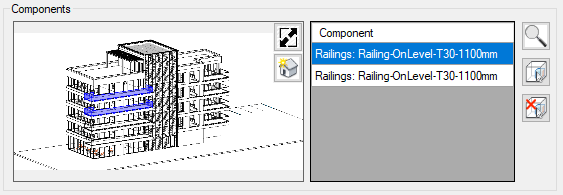Have you ever heard about BCF – Building Collaboration Format ? If not spend some minutes on our blog post and learn more.
BCF is a file-format which allows BIM software to communicate questions and reference specific building elements between IFC enabled software. This could be clash detection results or outside boundary issues.
Often this is done in software such as Solibri Office where you can export these issues to BCF.
BCF Manager
Within Naviate we have BCF Manager that work with filebased collaboration
This tool allows you to import that file and visually see where the issue is located in your BIM model. You can use BCF Manager within Revit projects without exporting IFC files by creating issues in BCF Manager. Select elements in Revit, start the tool, then click New to create related issues and add comments. Save the file and send to a colleague working with the same project.
Issues can also be exported back to Solibri as solved or with comments. It is also possible to communicate within a Revit project (without creating IFC-files) by creating comments and save as a new BCF-file.
But what if we would like to communicate across different software platforms or even in the cloud working with a live database instead of filebased ?
We recently partnered up with BIM Track to help us solve this and I came across one of their blog post telling us a bit how this will work. So let’s dive into this topic it’s time to learn some more!
This blog post was first published on the BIM Track blog on March 06, 2018.
What is a BCF?
The BCF, or BIM Collaboration Format, is a vendor-neutral file format to communicate coordination information that can live completely separately from the 3D model. It contains issue descriptions, snapshots, comments, authors, creation date, linked objects, view section planes, a unique GUID and more around an issue without containing any model element geometry itself.

Figure 1.0 What a BCF contains
There’s a great video explaining what a BCF is from the team over at BIMConnect too.
Cute! Why should I care?
The BCF was sorely needed. While the IFC schema structures objects geometries and information from software to software, BCF is where the communications surrounding your models live.
The BCF also helps to resolve coordination interoperability issues, even with different versions of the same software.

Say you find an issue in Solibri Office, and need to communicate it to someone working in Revit. Normally you would send a PDF report by email or drop it on an FTP site. The person working in Revit needs to manually find the location of the issue based on the information in the PDF. The BCF makes this tedious process unnecessary.

Figure 2.0 Interoperability between some major software players with the BCF.
No, the BCF isn’t perfect
One of the challenges with the BCF is that it is file-based, meaning that there can be older versions circulating. This is where cloud-based BCF exchange comes into play such as BIM Track. What this platform does is centralize the BCF data so there is only one version.
So why haven’t I seen the BCF before?
You’ve probably already used BCF-style variations in your existing software tools, which are perfect for internal use (within the authoring software itself). A BCF makes this information external.

Figure 3.0 Software vendors’ proprietary BCF-style variations
How can I start using the BCF on my projects?
If you’d like to learn more about the use of BCF in a BIM collaboration environment, you can see how Aeroports de Quebec Inc. used it on their extension of the Jean-Lesage airport terminal. You can also get started today with BIM Track, to harness the power of the BCF in an intuitive, easy-to-use way.
Bonus round: the history
If you are wondering how the BCF came about, its actually a pretty cool story of software vendors (namely Tekla and Solibri) coming together to help open BIM around communications. Thank you to buildingSMART forsharing the history:






